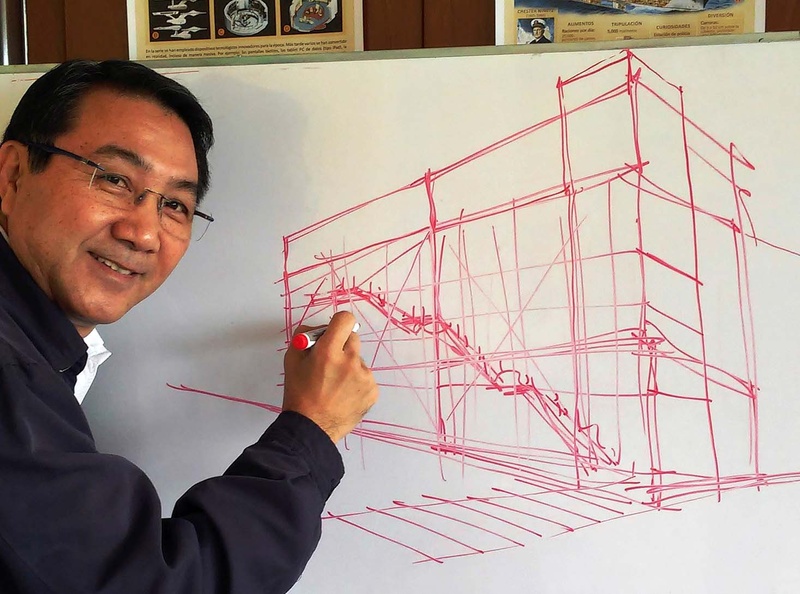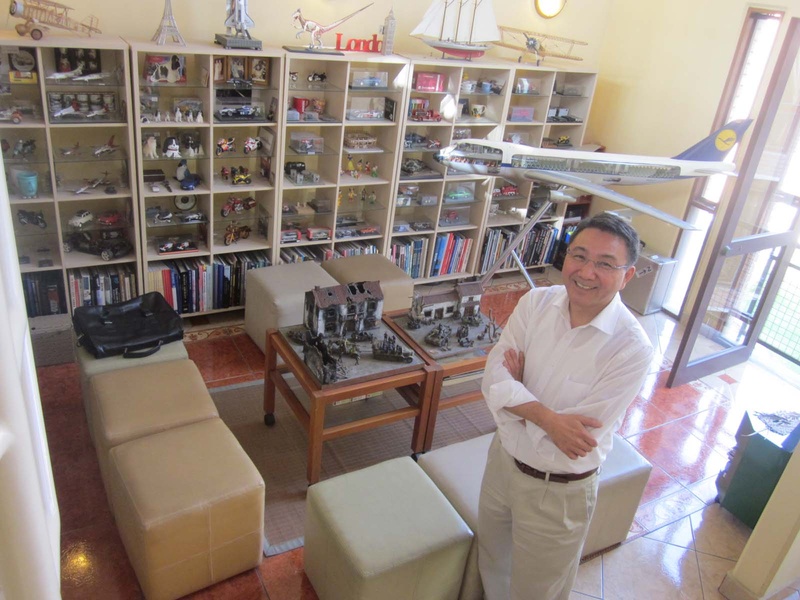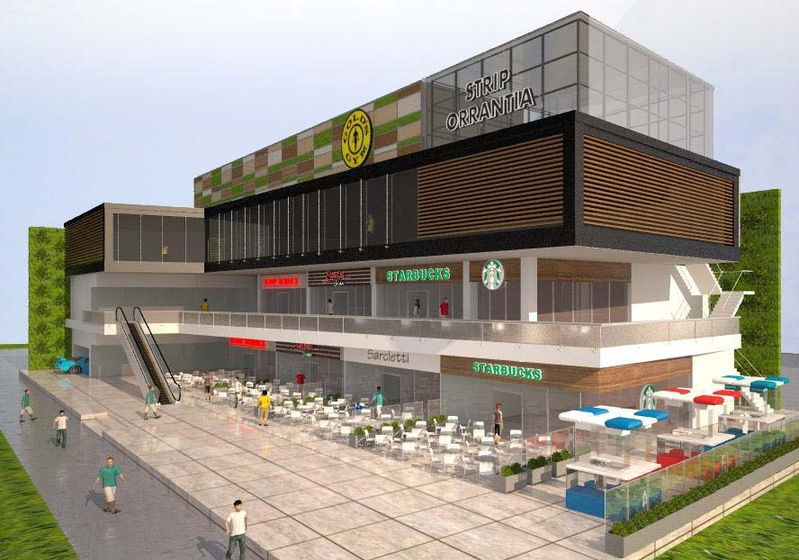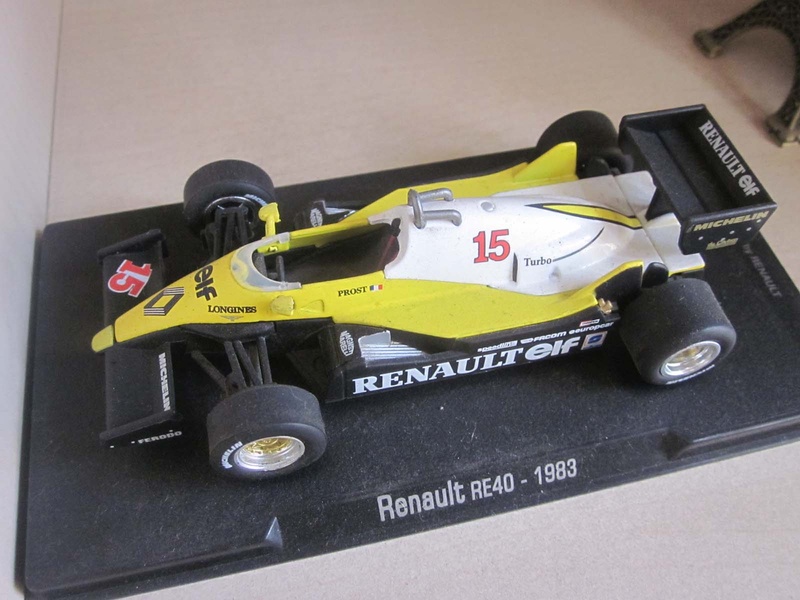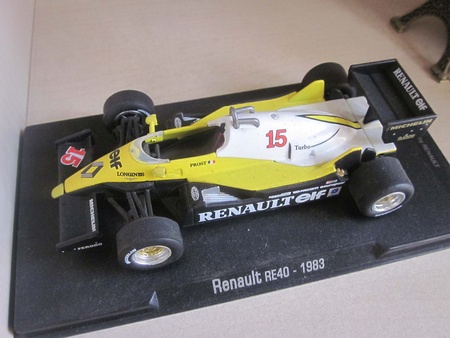His full name is Carlos Chinen Kanashiro. Made in Peru, by Nikkei parents, model 1956, architect by profession. This is his story to put together, from his beginnings in the career that has led him to design several supermarkets and shopping centers in Lima and other regions of the country, to his hobby for modeling that has made him the largest collector and to have a museum. which will soon have its second headquarters.
He receives me in his two-story office connected by a spiral staircase. On the ground floor there is a room adorned with scale models, books, dioramas and a huge model of a Lufthansa commercial flight plane. On the second level, the Carlos Chinen Arquitectos & Consultores team works on various projects simultaneously, surrounded by plans, photographs of buildings and more scale models.

The complex of buildings with brick-colored walls where we are, which has a kind of square with gardens surrounded by the apartments, was designed by Augusto Ortiz de Zevallos, his friend and one of the first people he worked with. Since he was a child, Carlos liked to draw and assemble airplanes. “I had a teacher who taught me drawing and who taught me more than the rest during recess. This is how I learned what perspective and the vanishing point are.”
On the way to the Melitón Carvajal national school, where he studied high school, Carlos was struck by the constructions being made by the military government of Juan Velasco Alvarado. “Later I learned that this type of construction is called 'brutalism,'” says the always smiling architect, referring to those enormous, crude-looking concrete buildings that became fashionable in the 1970s.
Modeling, he explains below, also involves making a plan or design, collecting technical or historical data, building and preserving each piece. That childhood pleasure that he still retains was the first piece of his professional career and the museum that bears his name.
Architect model
In 1974, Carlos Chinen entered the Pontifical Catholic University of Peru, studying civil engineering, but he did not stay there for long. In his first year of studies he decided to do an internship in a Japanese company to learn what the world of construction was like. “I was more interested in working with an architect, knowing what his office was like, how it was organized, making models, drawing plans in pencil on butter paper… I started as an assistant, doing orders, buying cigarettes.”
There he realized that the person in charge in a construction was not the engineer but the architect. Then he applied for that career at the Ricardo Palma University and, for a time, he was in both places. He did not tell his parents so as not to go against the will of his father who now lives very close to his office and whom he visits every day. He paid for his studies alone until he couldn't take it anymore and told them the truth.
Working with renowned architects of the country such as Franco Vela, who designed the Museum of the Nation (one of those buildings that he admired in his school days) or Augusto Ortiz de Zevallos, an urban planner who has carried out various public and private constructions in the city, was a great encouragement for him, who has been dedicated to this profession for 35 years, always linked to another well-known Peruvian with an Asian surname: Erasmo Wong.
Designing supermarkets
They met in 1991, when the businessman of Chinese origin had already gone from owning a winery to owning five stores in the capital. At that time, the Gálax, Todos and Monterrey chains dominated the sector, with more than 70 supermarkets in the city, while the “E.Wong” brand was only known in the high segment. When he hired him, Erasmo told Carlos that his goal was to open a store every year.
“Wong had strengths over others. Customer service and technology. They took the bags to your car and used a scanner to find out how much each product cost. With those attributes it was easy to see how others fell and we bought their stores,” says Carlos, who says that Feng Shui techniques were used in each store. “For example, there was always a swimming pool because it is known that water brings new energy.”
In 17 years, Carlos opened 60 stores (he keeps the documentation for all of them) for Wong, with whom in 1993 he created the “Metro” brand, with the spirit of the transnationals Walmart and Carrefour: low prices. They built the first hypermarket in a military town that needed new tracks and exterior lighting, and they did not stop until they turned the brand into one of the most popular in the country.
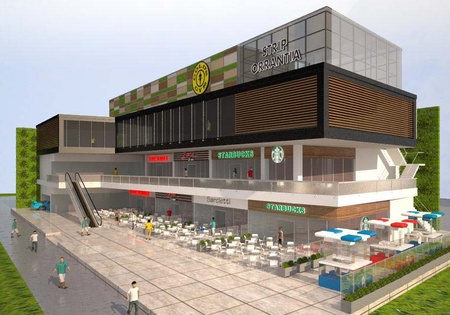
“We worked all day and on Sundays Erasmo would grab the car and we would go look for land for the new supermarkets.” In 2007, news surprised all Peruvians and Carlos himself: Wong was selling the entire company to the Chilean group Cencosud. Carlos felt sorry and even disappointed. He wanted to resign but Erasmus convinced him to embark on a different project.
Shopping centers and other challenges
“Many saw the sale of Wong as a betrayal,” says Carlos, “but I think it was the right time.” In 2005, Carlos had already converted the Metro de Chorrillos hypermarket into a shopping center, which prepared him for his friend's new challenge: building Plaza Norte, in an area of 188 thousand square meters. “I chose a team of people who think the same as me, we had to open it in a year, we designed and built simultaneously,” remembers Carlos Chinen.
The objective was to convert the shopping center into the civic center of six districts in the north of Lima, with a land terminal for buses and parking for 3,500 cars. Later he built shopping centers in provinces such as Callao, Ica, Trujillo and Cusco. At the same time, he had other projects such as the design of Chinatown in the center of the capital, in 1999, for the 150 years of immigration to this neighborhood, and others that he attended to with his consulting firm (condominiums, car stores, office buildings).
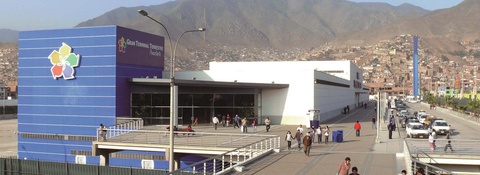
Carlos Chinen recognizes himself as a workaholic, but in 2011 he had a car accident that changed his life. “It was like being born again,” says Carlos, “I realized that I had made a 'master plan' for many projects but that I didn't have one for my own life.” Then he began to dedicate more time to his family and to the Chinen Modeling Museum , a passion that has led him to have more than five thousand pieces that can even be found in the laundry room of his office.
A hobby and a museum
At home, in his office and in an apartment that he no longer occupies, Carlos Chinen has stored cars, planes, military vehicles and other pieces (some unassembled and still in their boxes) that make up a collection so large that it does not fit in the museum. of the Plaza Norte shopping center, owned by his friend Erasmo Wong, and which opened in 2009. There, in 60 showcases, he has about 1,500 pieces on display for the entire public for free.
Now, he hopes to continue with a second headquarters in the shopping center that he has designed in San Juan de Miraflores, south of Lima, with the desire to formalize it and have it have an administration that makes it sustainable. “The purpose is to awaken in children the ability to dream and visualize technological solutions to the remains and problems that they will have to face as an adult,” he explains.
Mustang cars from all eras, bomber planes, submarines, dinosaurs, figures from science fiction movies and other pieces give a broad historical context to a collection that began as a hobby in his childhood but is also a lesson in patience and dedication . “Assembling a piece can take days, weeks or years,” says the architect who has a team of model makers who help him assemble his models.
A city under construction
In his office, among formula one cars, helicopters and motorcycles, the models of the architectural projects that Carlos has designed in a city that has not yet been completed are interspersed. For the architect, the chaos that exists in Lima is due to unfinished work on the road infrastructure and a less than humanistic view of the authorities with respect to public spaces.
“Urban planning theory says that every city should be within a ring called the circumambulation and on a crossing. This megaproject has not been completed in Lima,” says Carlos, adding that in the capital of Peru you can see two faces: that of real estate development that can be seen in the increasingly taller and more modern buildings; and that of urban planning, with a transportation crisis and lack of parks, squares and pedestrian streets. “Mayors think more about cars than pedestrians.”
The humanist current of urbanism, which seeks the common good, shines in cities in the United States and Europe, with segregated transportation systems and green areas. In Lima, projects such as the rescue of the Rímac River or the Costa Verde boardwalk have been truncated. “Public space is part of people's emotional state,” says Carlos, who believes that there should be a “middle ground” that makes enjoying the city and getting around it not a headache. Lima, like many of its models, is not finished being built. But to become a collector's item, it needs a mayor with an urban planning vision.
© 2015 Javier Garcia Wong-Kit


